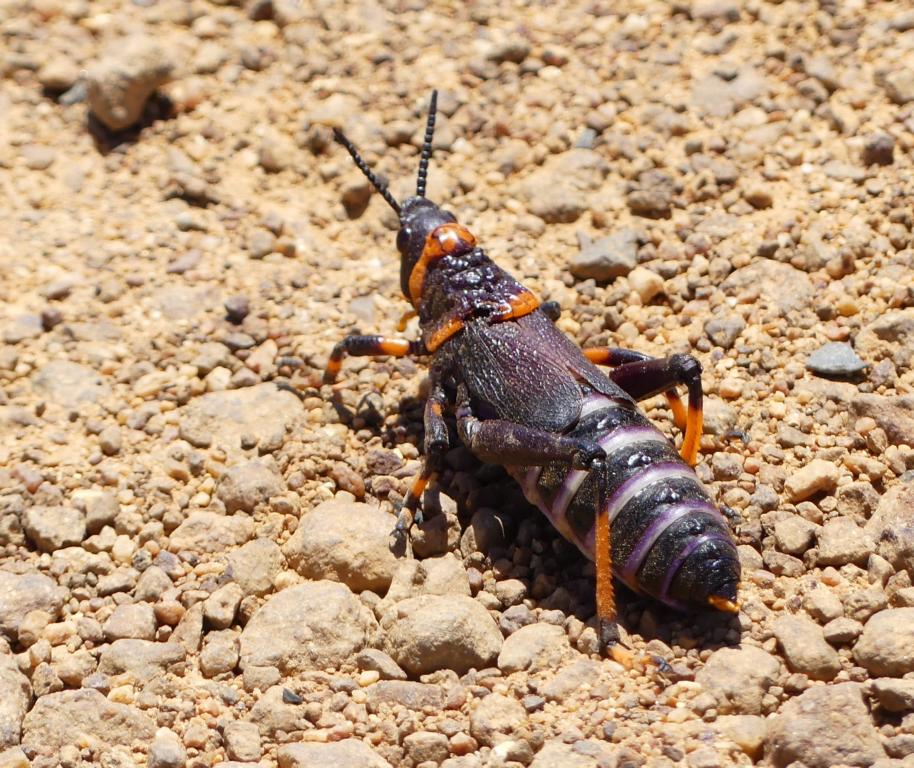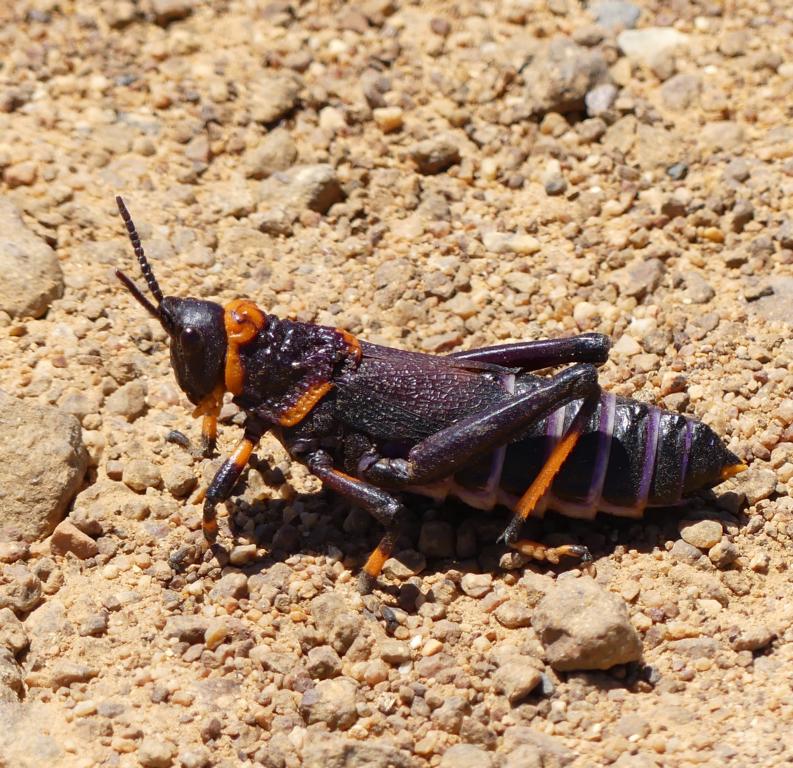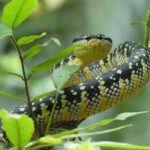Koppie Foam Grasshoppers (Dictyophorus spumans) are indigenous to South Africa and prefer sparse and low vegetation on rocky outcrops. They are flightless and have some aposematic coloring, which are yellow or orange stripes on the warty thorax shield and stripes on their abdomen. These grasshoppers can attain a length of up to 80 mm. Interestingly, despite their size and coloring, they are commonly not called locusts but grasshoppers due to their solitary lifestyle. However, all locusts belong anyway to the genus of grasshoppers.


Pic.: Koppie Foam Grasshopper at West Coast N.P, Western Cape Province, South Africa.
Why are Koppie Foam Grasshoppers poisonous?
The reason for presenting this hemi-metabolic insect in this series of articles is that Dictyophorus spumans are dangerous. When threatened, they will produce a toxic foam from their thoracic glands. And as they mainly live from highly poisonous plants, like milkweed (Gomphocarpus physocarpus), their blood contains cardiac glycosides and heart-stopping toxins. The author of this article observed them also feeding on Arum lilies (Zantedeschia Aethiopica), Inanda lilies (Cyrtanthus sanguineus), and Cape Gooseberries (Physalis peruviana). They also feed on Poison arrow trees (Acokanthera oppositifolia) and Yellow Oleander (Cascabela thevetia). And all those toxins from feeding are contained in high concentrations in their defensive foam.


If somebody thinks that milkweed Locusts have very pronounced aposematic coloring and are feeding mainly on milkweed, maybe a grasshopper with less prominent coloring is edible. This person should think twice. A Koppie Foam Grasshopper would be a deadly alternative on the menu.
Lessons learned from Koppie Foam Grasshoppers:
- Insects, which are moving slowly over the ground, should not be considered food.
- Aposematic coloring is a clear warning sign to stay away.
- Green locusts with red underwings – only visible at flight – must also be avoided.
- Locusts, which have no yellow-, orange- or red color on their body and fly fast in warm weather, can be eaten.
.




